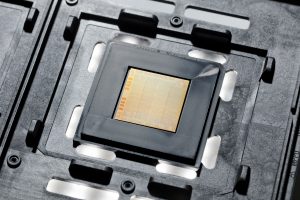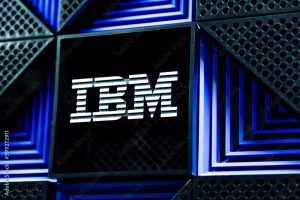
What Power10 Means for IBM i Shops

In September 2021, IBM announced the new IBM Power E1080 server, the first in a new family of servers based on IBM’s Power10 processor. The E1080 is now generally available. Power10 runs the same operating systems that all IBM Power servers run: IBM i, AIX and Linux.
Power10 systems offer many new capabilities beyond its predecessors. Here are some of the more interesting new features that are only available with Power10 systems.
Technology Enhancements
As opposed to the Power9 processor that was built with 14nm technology, Power10 is the first commercial IBM processor built with 7nm technology, giving it a much smaller footprint. IBM designed the Power10 to support up to a 3x increase in users, workloads and OpenShift container density. IBM also expects Power10 to deliver up to a 3x improvement in processor efficiency per socket versus Power9, using the same power envelope as a Power9. Its streamlined design and lower power consumption will produce greater efficiencies, reduce costs and reduce Power10 machine footprints.
Memory Encryption capabilities
Power10’s new encryption capabilities benefit applications running on any Power10 operating system, enhancing the security of Power10 data-in-transit.
IBM implemented transparent memory encryption with Power10, quadrupling the number of encryption engines per core, resulting in 2.5x faster AES encryption speeds versus the IBM Power E980. Power10 systems automatically encrypt all data stored in memory, and data in memory remains encrypted as it moves between memory and processor. Encryption is performed at the processor level; no additional setup is required to activate this capability.
The new processors also support anticipated cryptography standards such as Fully Homomorphic Encryption (FHE) and Quantum-Safe Cryptography, providing support for future capabilities.
Embedded AI (Artificial Intelligence)
Power10s have Matrix Math Accelerator (MMA) engines built directly into every core (in-core). MMAs efficiently perform matrix math operations used in artificial intelligence (AI) processing, including machine learning, inferencing and deep learning. Power10 matrix math operations have been optimized across many different data types and precisions.
Power10 workloads with embedded AI components can run faster on the processor without needing a co-processor. With IBM i supporting open-source machine learning libraries including Python, these capabilities provide new strength to organizations wanting to implement IBM i AI workloads. See IT Jungle’s recent article for one example where AI is being implemented on IBM i today.

The Power10 platform also supports the Open Neural Network Exchange (ONNX) for machine learning interoperability. ONNX provides an open format for supporting deep learning and machine learning models, complete with common file formats, tools, frameworks, runtimes, and compilers for AI developers to use. Using ONNX support, AI modules can be trained and developed anywhere and then deployed to the E1080 platform unchanged, allowing Power10 to run cross-platform AI workloads.
Reliability, Availability and Serviceability (RAS)
IBM has added many new RAS capabilities to its Power10 servers, including:
- A new memory architecture called Open Memory Interface (OMI): Rather than using industry standard DIMMS used in x86 systems, Power10 is using OMI-attached advance memory Differential DIMMS (DDIMMS). IBM says Power10 DDIMMS will deliver twice the reliability and availability of industry standard DIMMS. The new DDIMMS feature buffered memory architecture that is isolated to each DDIMM, avoiding Power10 system outages when a failure occurs. With the E1080, overall memory bandwidth has increased to over 400 gigs per second/per socket.
- Reducing backplane replacement failures through cabling: The SMP cabling system has been improved to use both passive and internal cables on the fabric busses that connect processors between and within drawers. Signals are no longer routed through the CEC backplane, increasing system reliability by decreasing the probability of a main system backplane replacement. The new cabling also supports dynamic deallocation and repair of SMP cables, enabling the system to keep running even when a cable is defective. If a persistent error occurs on the bus, the system can shift to “1/2 bandwidth mode” and use only four of the bus’s available eight data lanes. The physical bus cables also contain a “spare” ninth lane that can be employed to replace a failed lane or avoid repairing a cable.
- Increasing reliability through processor clock redesign: A new design for redundant processor clocks. While Power10 retains redundant clocks, it no longer requires that all processor modules in each CEC drawer be synchronized with each other. Each processor can run asynchronously and use a separate resource clock. This new design increases processor clock reliability.
Linux Red Hat OpenShift Container Security
With higher container densities in Linux environments, IBM designed Power10 to provide hardware-enforced container isolation and protection capabilities that were co-developed with IBM Power10 firmware. If a Red Hat OpenShift container becomes compromised, the Power10 processor can isolate the affected container, preventing other containers from being compromised by the same attack. Power10 can also help defend against certain real-time application vulnerabilities. IBM designed Power10 to give users dynamic execution register control, allowing them to write applications that are more attack resistant.
Power10 servers will also support metering by the minute for Red Hat Enterprise Linux and OpenShift.
To Learn More
These are just some of the hardware changes that IBM has implemented with the new Power10 servers. Check out the IBM Power E1080 – Technical Overview and Introduction IBM Redbook for more detailed information about the new Power E1080 hardware that uses the Power10 chip, and how it can help your shop.





